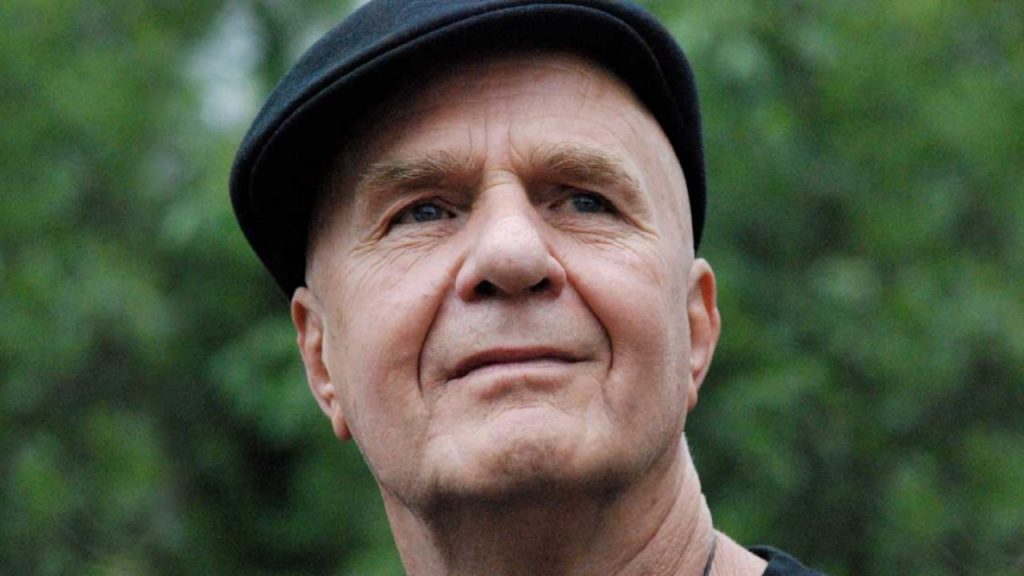Dr. Wayne Dyer – Everything you want to know about him

Dr. Wayne Dyer
Dr. Wayne Dyer was revered as the “father of motivation” by many. He was regarded as one of the best authors and lecturers in the area of empowerment and self-improvement. Since he released his first book, “Your Erroneous Zones,” twenty years ago, his publications have been translated into every language spoken on earth, he has been taped, and he has appeared on more than 5,000 TV and radio programs, including Oprah,The Today Show and The Tonight Show. Dyer has traveled the world as a motivational speaker, holding thousands of workshops.
Dyer spent the following few years in foster care and orphanages, and in 1946, he and his brother were living in a foster home in Mount Clemens, Michigan, where he started first grade. Hazel married Bill Drury two years later in an effort to secure her financial future and allow her to bring her sons home. By 1949, the family had come back together, and the three Dyer boys were residing with their mother and stepfather in Detroit under the same roof. The boys soon learned that their stepfather was a verbally abusive alcoholic, so the joy of the reunion was fleeting.
Childhood discovery of the inner world
During a read-aloud of The Secret Garden in the fourth grade, Dyer had his first “a-ha” experience on the capacity of the human mind. The book, published by British author Frances Hodgson Burnett in 1910, examines the idea of healing through the discovery of a “secret garden” that actually heals one’s ailments.
According to Dyer’s autobiography, I Can See Clearly Now, he enjoyed reading the book every day since it took him away from his stressful home life. Dyer came to the conclusion after reading The Hidden Garden that he could construct his own hidden garden, which is “the place within me that has no restrictions, no obstacles, and where I can create for myself a way of living that is immune to any and all influences that might bring me down.” Throughout his adult life, he would explore this concept in books, and the potential power of the mind developed into a recurring theme in his writing.
In 1955, Dyer was a senior in high school and employed at a nearby supermarket called Stahl’s Market. His brothers all had jobs and paid money toward the family’s expenses. Knowing that she and her sons could live independently, Hazel had filed for divorce. At this point, Dyer had found his love for reading and writing, and he was earning extra money by providing his classmates with book reports.
He experienced a second spiritual “awakening” in high school after being taken to the principal’s office for refusing to finish a biology project he thought was pointless. Dyer discovered a copy of Henry David Thoreau’s Walden in the office while waiting to meet the principal and started reading it. He was immediately captivated by the writing style and substance. The teen first learned about transcendentalism from the book.
Dyer entered the U.S. Navy in 1958 and was assigned to Bainbridge, Maryland, to study naval communications so he could work as a radioman and cryptographer. Dyer had graduated from Detroit’s Denby High School. He was sent to the USS Ranger, an aircraft carrier with a base in Alameda, California, two years later. Having attained the rank of petty officer second class, Dyer then served a tour of duty in Guam before being released from the Navy in September 1962.
Investigated Psychology
Dyer enrolled at Wayne State University in his hometown of Detroit after leaving the American service. He graduated with a bachelor’s in history and philosophy in 1965, and a master’s in psychology in 1966. He married Judith Matsura in 1968, and they had a daughter named Tracy at the time. He attended extra coursework at the nearby University of Michigan in Ann Arbor to diversify his studies for his PhD in educational counseling. The Psychology of Perception was one of those courses that left a lasting impression. The use of hypnosis to treat perceptual disorders was covered in the course.
Dyer gained knowledge about the potential influence the mind could have over the body in this course. He also discovered that a person’s beliefs affected how they perceived the world. The lecturer carried out an experiment to illustrate this idea. He touched a woman with a pencil eraser, and she shrieked in agony because she thought it was a hot pin. The teacher had previously shown the woman a red-hot pin and allowed her to feel the warmth of it close to her cheek. In fact, the woman had blisters where the eraser had touched her, and Dyer left the class fascinated.
When Dyer went to his father’s grave in 1974, he had another significant encounter that would shape his body of work. He had always been curious about his father and had been upset that he had left the family. Dyer’s son did not learn of his father’s passing until many years had passed. On August 30, 1974, Dyer made the decision to go to his father’s grave while he was in Biloxi, Mississippi. He referred to that day as one of the most important of his life in I Can See Clearly Now.
Dyer talked to the man for several hours while he was at the tomb, and as a result, his rage and hatred subsided. He also went looking for one of his father’s acquaintances and found out more about the senior Dyer’s wanderlust and alcoholism. In I Can See Clearly Now, he described how forgiving his father changed his life.
Dr. Dyer’s teachings continue to inspire and uplift people all over the world, even after his passing in 2015. His books, audio programs, and videos remain popular today, and his message of love, kindness, and spiritual awakening continues to resonate with those who seek a more fulfilling life.
Everything in my life changed when I was able to transmit love where anger had previously reigned,” he said. “The circumstances magically appeared, all scarcity dissolved, my health returned, my energy was reignited, and my life became flooded with abundance,” the author writes. “The right words were there, the right people began to show up.” Dyer would give forgiveness a lot of attention in his subsequent writing.
Dr. Wayne Dyer – Best-Seller Author
Dyer was moved to create a psychology book on normal people trying to improve their lives after forgiving his father rather than academics. The Your Erroneous Zones: Step-by-Step Advice for Escaping the Trap of Negative Thinking and Taking Control of Your Life manuscript was the result of his 14-day hotel stay in Ft. Lauderdale, Florida, after which he had traveled there.
The 1976 publication encouraged readers to take control of their life by letting go of pessimistic thinking and mastering better emotional control. Remorse, anxiety, guilt, concern, and over-dependence are a few examples of self-destructive habits that Dyer referred to as “erroneous zones.” One of the best-selling books of all time, the book was eventually translated into 47 languages and sold close to 100 million copies globally.
However, Dyer’s book took some time to get going. 6,000 copies of Your Erroneous Zones were printed in the first run, and Dyer bought 2,000 of them to demand a second printing. He bought more after the second printing. In this way, he maintained the book available, but to keep it in print, he also needed to sell the books and spark additional interest. At this moment, Dyer left the college and began traveling to promote the book.
He handed his book off at neighborhood radio stations as a marketing strategy, then followed up to set up interviews. Following his radio appearance, Dyer went to the neighborhood bookstores to sell copies of Your Erroneous Zones to the listeners of his show. He also gave speeches at universities, corporations, and places of worship like Unity and Science of Mind. He organized readings at bookstores and open seminars.
Dyer’s efforts were successful, and Your Erroneous Zones became more popular. After the Tonight Show talent coordinator read his book, he was given another big break when he was asked to appear on the program in September 1976. Quite quickly, Dyer secured appearances on well-known television talk shows like The Merv Griffin Show and Dinah! His name first appeared at the top of the New York Times best-seller list on May 8, 1977, and remained there for 27 months. On May 12, four days later, Dyer sold out Carnegie Hall.
Pulling Your Own Strings, published by Dyer in 1978, provided guidelines for leading a life free from outside influences. What Do You Really Want for Your Children? (1985) helped parents teach their children that they were in control of their own happiness. The Sky’s the Limit (1980) dealt with self-realization. You’ll See It When You Believe It (1989), Manifest Your Destiny: The Nine Spiritual Principles for Getting Everything You Want (1998), and 10 Secrets for Success and Inner Peace (2002) all concentrated on personal development and incorporated spirituality.
Developed into a TV Staple for Self-Help
Dyer appeared on television as regularly as his novels did on bestseller lists over the years. He appeared on The Tonight Show more than 35 times and was a frequent guest on The Oprah Winfrey Show and The Ellen DeGeneres Show. He was a popular guest of many talk show presenters. DeGeneres and Dyer became close friends, and in 2008, he presided at her wedding to Portia de Rossi. He also created a number of PBS programs, the most of which were lectures, and appeared frequently on public television during pledge drives. On his website, Dyer sold audio and video products that he used to further promote his message. He also published a blog and taught online classes.
Dyer had three marriages. He married Susan Casselman after divorcing his first spouse, but the two eventually got divorced in the middle of the 1970s. Dyer and Marcelene Rowan had five children together between 1979 and 1989: Skye (born in 1981), Sommer, Serena, Sands, and Saje (born in 1989). The family also included Marcelene Dyer’s two children from a previous union.
Despite their separation in 2003, Marcelene and Dyer never got married. When this 20-year relationship came to an end, Dyer fell into a depression and wrote The Power of Intention, which was released in 2005. Excuses Begone! was published four years after that, and I Can See Clearly Now, his autobiography, was published in 2014. Despite his popularity, Dyer wasn’t without his detractors, some of whom felt that his straightforward recommendations for leading a more satisfying life wouldn’t be of assistance to those who were dealing with complex issues. He was accused of stealing concepts, too, but no prosecutions were ever brought against him, and he had a long life as a well-liked, best-selling novelist.
In 2009, Dyer received a lymphocytic leukemia diagnosis. He passed away on August 29, 2015, after living his final years on the Hawaiian island of Maui. Wayne has departed his body, passing peacefully through the night, according to a Facebook message from Dyer’s family, according to Steve Chawkins of the Los Angeles Times. He has always claimed to have no fear of death and to be eagerly anticipating the start of this new adventure. Our hearts are shattered.
His website, www.drwaynedyer.com and social media pages continue to share his wisdom and legacy with the world.


